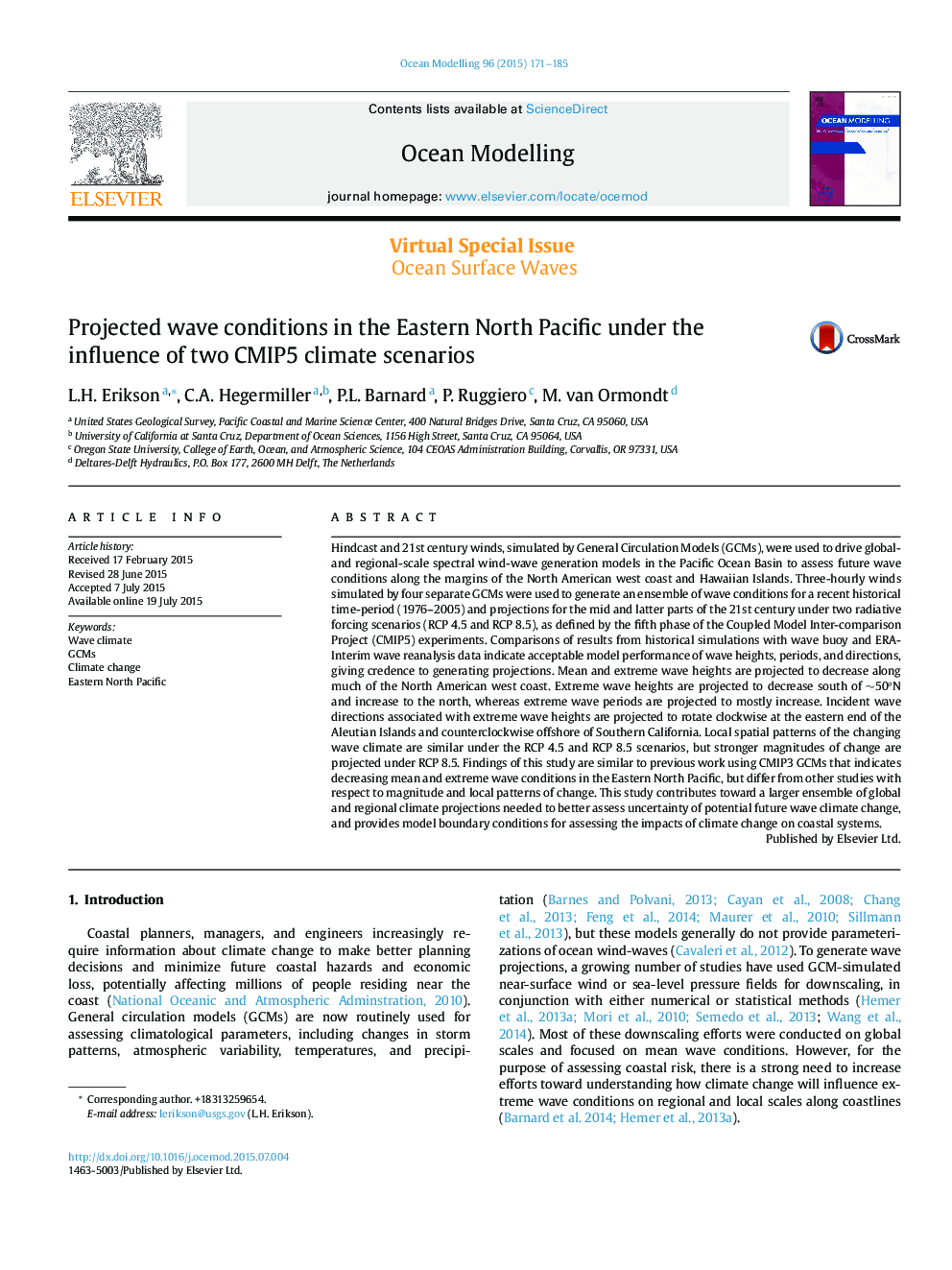| Article ID | Journal | Published Year | Pages | File Type |
|---|---|---|---|---|
| 4552006 | Ocean Modelling | 2015 | 15 Pages |
•Twenty-first century changes in Eastern North Pacific wave parameters are projected.•A transition zone in projected changes near the coast exists at ∼50° N.•Mean/extreme wave heights will increase north of this zone and decrease elsewhere.•Wave periods are projected to increase along the mainland coast.•Storm wave directions are projected to rotate counterclockwise off South California.
Hindcast and 21st century winds, simulated by General Circulation Models (GCMs), were used to drive global- and regional-scale spectral wind-wave generation models in the Pacific Ocean Basin to assess future wave conditions along the margins of the North American west coast and Hawaiian Islands. Three-hourly winds simulated by four separate GCMs were used to generate an ensemble of wave conditions for a recent historical time-period (1976–2005) and projections for the mid and latter parts of the 21st century under two radiative forcing scenarios (RCP 4.5 and RCP 8.5), as defined by the fifth phase of the Coupled Model Inter-comparison Project (CMIP5) experiments. Comparisons of results from historical simulations with wave buoy and ERA-Interim wave reanalysis data indicate acceptable model performance of wave heights, periods, and directions, giving credence to generating projections. Mean and extreme wave heights are projected to decrease along much of the North American west coast. Extreme wave heights are projected to decrease south of ∼50°N and increase to the north, whereas extreme wave periods are projected to mostly increase. Incident wave directions associated with extreme wave heights are projected to rotate clockwise at the eastern end of the Aleutian Islands and counterclockwise offshore of Southern California. Local spatial patterns of the changing wave climate are similar under the RCP 4.5 and RCP 8.5 scenarios, but stronger magnitudes of change are projected under RCP 8.5. Findings of this study are similar to previous work using CMIP3 GCMs that indicates decreasing mean and extreme wave conditions in the Eastern North Pacific, but differ from other studies with respect to magnitude and local patterns of change. This study contributes toward a larger ensemble of global and regional climate projections needed to better assess uncertainty of potential future wave climate change, and provides model boundary conditions for assessing the impacts of climate change on coastal systems.
